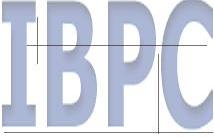The Portrait of Vladimir Ilyitch Lenin
by Alex NodopakaMuse Motel
First Place, July 2013
Judged by Robert Sward
I acquired the painting at a major discount from a dealer of antiques
on account of the housing market collapse of 2008 and began research
into old archives for portraits of the Bolshevik with a white goatee.
After browsing through a multitude of portrayals, I could have drawn
the man blindfolded, yet could not find a single one with a white goatee!
The lower right corner of the painting bore two fat initials: R.G.
and the back of the gessoed panel sported some illegible pencil scribbles
and a glued tag identifying a framer from Frankfurt. Anyone could have
bought a frame there and affixed the painting but the masterly stroked
oil on board was thumb tacked by a peculiarly styled pin head perforated
with two diametrically opposite small holes. The painting was not dated,
which sent me trying to put a time frame on the masterpiece.
Now, if anything, I know much about push pins and who invented which
and when. At that point I still had no clue as to who the painter or
the poser were. Frustrated I researched the owner of the painting who kindly
had himself identified on the back of the artwork with a neatly typed label:
Eigentumer: architekt Stefan-Blattner. When I discovered who he was
my mouth dropped open in awe at his reputation. Here I had some
documentation as to the painting’s provenance though did not relish
the individual being associated to Joseph Goebels. Then I remembered
the Germans identified all their belongings, especially the stolen paintings,
and meticulously documented their misdeeds, thus martyring their hostages
while also disposing of their gold dental contraptions. I only wanted to
document my purchase even if it was of dubious provenance. In the end
I convinced myself it was not the authenticity of the portrait that mattered
but the architect or some guru of the same Bauhaus school because further
down the article I could not help notice references to Le Corbusier, G. Candilis,
G. Godefroy and A. Nodopaka. That last name by no accident was my father
who surely knew Lenin at least by sight. Driving home with my purchase
I smelled a revolting odor of stale cigarette smoke coming from the canvas.
I comforted myself with having some knowledge of artwork restoration
and that by rubbing a fresh onion over the face of the painting would
remove surface grime but since the waft would remind me of a cheap pizza parlor
I would do a final rub with a fresh lemon and use the rind in my Vodka.
At last I could toast Trotsky’s hammer and sickle bitter sweet assassination
and Lenin’s mummification aromatised with a mouth puckering affair!
I like the energy of PORTRAIT OF VALDIMIR LENIN, the liveliness of the piece, the "telling" of a story, the narrative sweep, the humor and ambition of the poem.
I admire too the poet's attention to detail ("a peculiarly styled pin head perforated with two diametrically opposite small holes...") and that the details are in keeping and in rhythm with the rest of the poem. And I'm drawn in by the wry humor of lines like "Now, if anything, I know much about push pins and who invented which and when." Seemingly "flat" as poetry, that line and others like it, are in harmony with the voice and rhythm of the rest of the poem.
Though not a great fan of "prose poem," PORTRAIT wins me over, convinces me of the virtues and value of the form. It strikes me, too, that there's a rightness to the choice of the prose poem form over other forms this poet might have chosen. In fact, the more time I spend with PORTRAIT, the more I like it. And I like the sense of "truthiness" of the poem, it feels right, it feels real. And, yes, fellow fans of Stephen Colbert, truthiness can be used in a positive way. Beyond "truthiness," I want to ask if there's such a thing as a nonfiction poem? I think there is and PORTRAIT is a good example.
And I like too that the poet apparently has some "real" knowledge of the craft he describes, as when he/she writes, "I comforted myself with having some knowledge of artwork restoration and that by rubbing a fresh onion over the face of the painting would remove surface grime..." Yes, in context, I think that's an entirely necessary and compelling line of poetry. It's a choice detail and one that helps put PORTRAIT over the top. It's a winner of a poem! Congratulations. --Robert Sward

